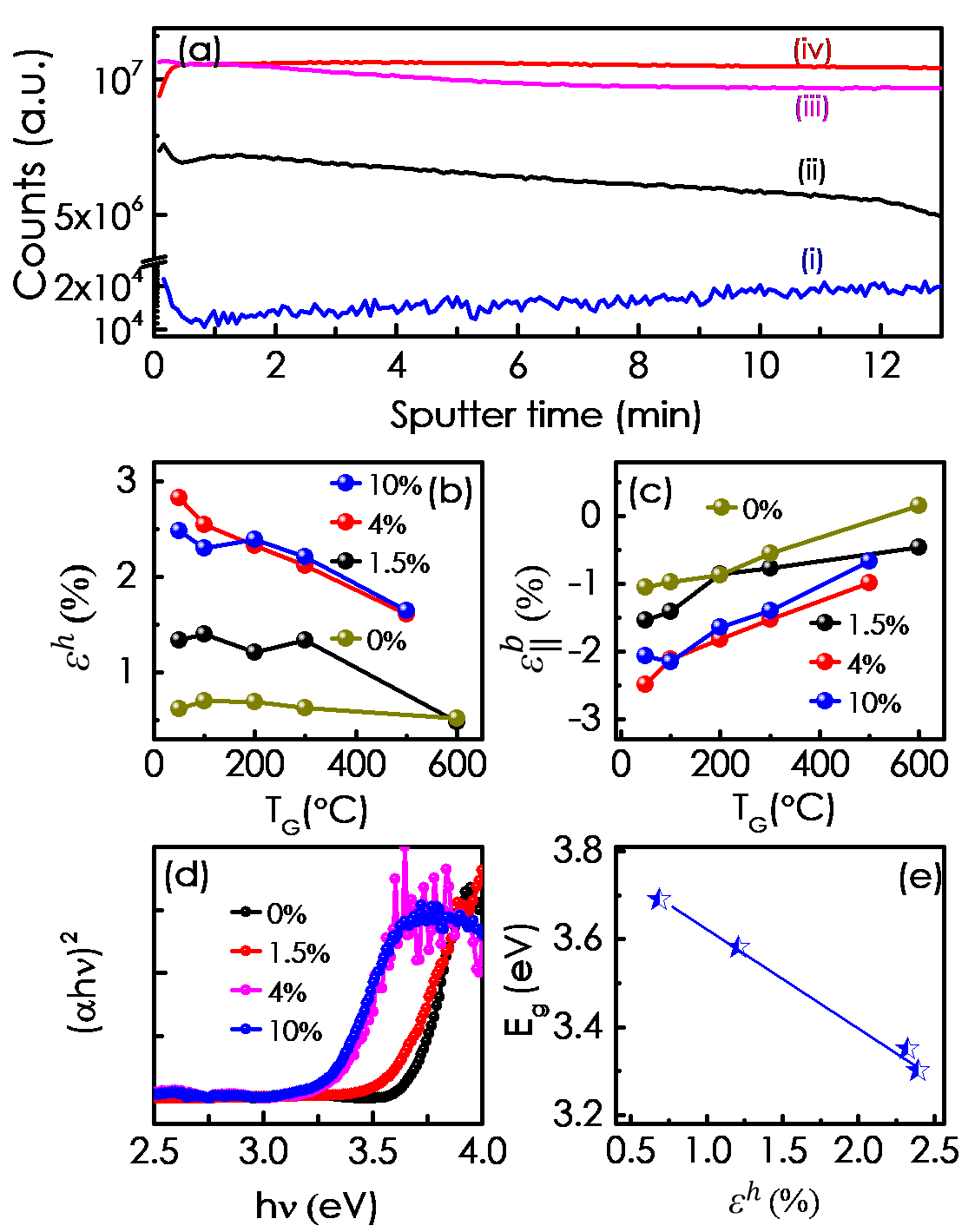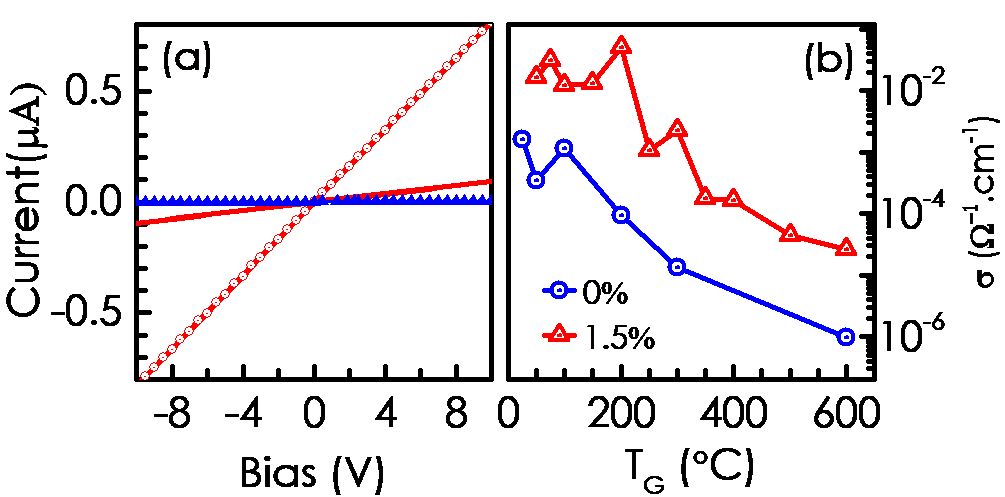Wide bandgap oxide semiconductors have tremendous potential for high temperature, high power, high frequency electronics as well as for ultra-violet (UV) emitters and detectors. However, unintentional generation of certain donor type of defects in the film during growth, makes it challenging to achieve stable p-type doping in these materials. Nickel oxide (NiO) with a direct bandgap of 3.6 – 4 eV, is one of the few wide bandgap semiconductors, where stable p-type conductivity has often been reported. Moreover, the material offers high chemical stability as well as antiferromagnetic ordering with Neel temperature as high as 525K. All these have made NiO a potential candidate for various applications, such as hole transport layer in organic solar cells, transparent hole conducting films, field effect transistors, UV photo detectors, exchanged biased systems, and spintronic devices. It should be noted that the stoichiometric NiO is an insulator. The p-type conduction in the film is often ascribed to the nickel vacancies (VNi). In fact, films with improved crystallinity do not show p-type conductivity, rather these are found to be highly resistive. Note that high crystalline quality is intended to achieve better device performance. It is thus imperative to obtain controllable p-type doping in NiO epitaxial films. Such a control is difficult to accomplish with the native defects because the same growth/process condition may also lead to the formation of other unintentional compensating defects in the film. Study of intentional doping is thus indispensable. Lithium has been shown as an efficient p-type dopant in NiO. Resistivity of NiO films is found to reduce by several orders of magnitude after Li incorporation. Whether the enhancement of conductivity is solely due to the substitution of Ni by Li or the formation of VNi defects as a result of Li incorporation, is still an unsettled issue. Detailed studies are thus necessary for better understanding of Li incorporation process in NiO.


Here, the Lithium incorporation in (111) NiO epitaxial layers grown by pulsed layer deposition (PLD) technique on c-sapphire substrates at different growth temperatures is systematically investigated. The effect of Li incorporation on the structural, morphological, electrical and optical properties of these films are studied. Although, Li-content in the film is found to increase at lower growth temperatures (TG) [see Figure 1(a)], the crystalline quality of the film deteriorates. The study suggests a miscibility limit of Li in NiO, beyond which Li-clusters are found to be formed in the films. It has been further observed that Li incorporation results in hydrostatic tensile strain in the NiO lattice, which in turn leads to the lowering of the band-gap [see Figure 1(b)-(e)]. Furthermore, Li incorporation has been found to improve the electrical conductivity of NiO layers [see Figure 2].


 Project summary by: Bhabani Prasad Sahu, Santosh Kumar Yadav, Simran Arora and Subhabrata Dhar, Department of Physics, Indian Institute of Technology Bombay, Mumbai 400076
Project summary by: Bhabani Prasad Sahu, Santosh Kumar Yadav, Simran Arora and Subhabrata Dhar, Department of Physics, Indian Institute of Technology Bombay, Mumbai 400076
Paper Reference: Bhabani Prasad Sahu, Santosh Kumar Yadav, Simran Arora and Subhabrata Dhar “Study of lithium incorporation in (111) NiO epitaxial layers grown on c-sapphire substrates using the pulsed laser deposition technique” J. Phys. D: Appl. Phys. 56.34 (2023): 345103 DOI: 10.1088/1361-6463/accc41
Hiden Product: SIMS Workstation
Download PDF: AP-SIMS-202215
To find out more about these products visit the SIMS Workstation product page or if you would like to contact us directly please Send us a Message.

